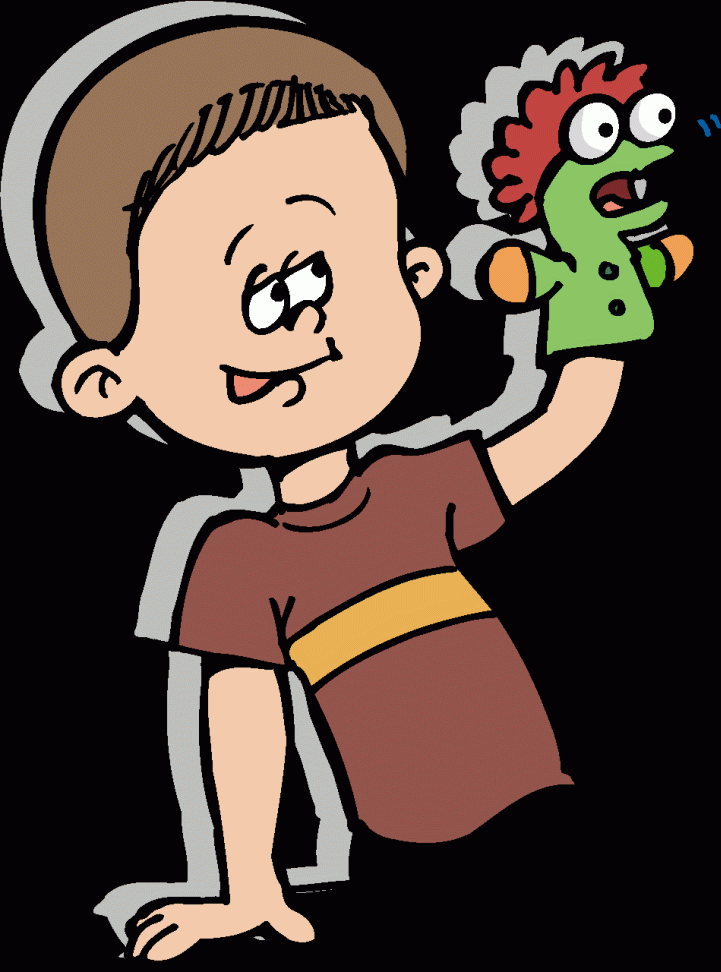

![]()
Let's start learning about puppetry!

Puppetry is the art of learning the basic techniques of operating a puppet and how to present a puppet show.
This page is intended for puppeteers with little or no experience. We will be learning the five basic techniques of puppetry and practicing exercises to help your technique.
These basics are important to all levels of puppetry. You need to become proficient in these techniques to the point that they become second nature. All of the basics can be practiced without a puppet. These skills are important to both puppetry and ventriloquism. Some ventriloquists use soft puppets so they need to know most of these basics the same as a puppeteer would.
HAND POSITION:
You must know the correct way to hold a puppet. Insert one hand through the body of the puppet and into the mouth. Your hand should feel comfortable with four fingers in the roof of the mouth and the thumb in the jaw below. Both the fingers and the thumb should be touching the cloth-covered mouth.
FIVE BASIC PUPPETRY TECHNIQUES:
1. MOUTH ACTION
Correct mouth action is necessary in good puppetry. Practice opening the puppet's mouth by moving your thumb downward without moving your fingers upward. (Don't flip your lid!) A slight forward thrust of the fingers may help when first starting out.
2. LIP SYNCHRONIZATION
Syncronize the opening and closing of the puppet's mouth with the spoken word. Avoid moving the mouth at random during a sentence. Do not open the mouth all the way with each word. Save the wide mouth openings for exaggerated or loud expressions. Do not bite your words or do your impression of a Japanese movie! Move mouth once for each syllable.
3. EYE CONTACT
Remember to look at the audience regularly. If your stage is elevated, you will want your puppets to look down a little more than usual, rather than over the heads of your audience.
This will ensure more effective eye contact. This is achieved by simple adjustments in the bend of the wrist.
4. POSTURE
If you want your puppet to appear natural, good posture cannot be ignored. To achieve this, the puppeteer's arm must be held at right angles to the floor and the hand kept level. Do not allow puppets to lean from side to side nor lean on the stage.
5. ENTRANCES & EXITS
While there are many ways to enter and exit a puppet, the one we recommend using most often is to make your puppet appear as if he is walking up or down a ramp. This movement uses the whole arm and requires the puppeteer to keep his forearm straight up and down while the wrist remains relaxed. Using a fluid motion, the puppeteer moves forward as he "bounces" the puppet onto the stage. With each "bounce" of the arm, the puppet comes more fully into view. When the puppet leaves the stage, this process is reversed. The beginning puppeteer will want to practice in front of a mirror whenever possible to observe his or her techniques. Holding the fingers immobile with the other hand while working the thumb will accustom the thumb muscles to this new movement. Whenever possible a beginner should use taped performances, fully memorized so that the added distractions of voice work and scripts are eliminated.